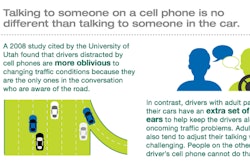
His “Last Word on Last Mile” blog focuses on the challenges faced by the smaller players in the field, and he often draws on the misperceptions of shippers as a starting point.
This week’s post is particularly timely. In it, Howard explains that “same-day delivery might be a hot topic in the press, but in private, most of the executives I speak with dismiss it.” And that’s a mistake.
Based on his conversations with execs “across businesses of every type and size,” he hears a few “myths” repeated consistently.
Myth 1: Consumers don’t need or want things within a few hours of ordering.
The myth in this statement is really the phrase “within a few hours of ordering.” When most people think of the future standard for same-day delivery, they think of a service like eBay Now, Google Shopping Express, or Deliv, where the product is delivered within a few hours.
“Not surprising considering the amount of press these companies have received,” Howard notes.
However, the same-day delivery standard will be an AM/PM service – order something in the morning, receive it by the evening, and vice versa, he says.
Myth 2: UPS, FedEx, or the US Postal Service are the best options to make same-day deliveries.
“None of these companies are viable options today,” he contends.
The local delivery and courier industry is a ready-to-go, very experienced option: It’s full of small, nimble, and highly flexible companies, accustomed to operating nearly 24/7, on most holidays, and meeting their customers’ needs as opposed to requiring their customers to meet their operational practices.
And, while they’ve historically been involved in business-to-business deliveries and struggled with quality, over the last few years, couriers have gone “mainstream.”
For proof, Howard points to the way Amazon has shifted more and more of its next- and two-day deliveries onto couriers and off of UPS and FedEx.
Myth 3: The economics around same-day don’t work because no one will pay for it.
If you look at the “all-in” (i.e., fulfillment and delivery cost) of a two-hour same-day delivery performed by a courier for a package, it can cost more than $30 a delivery. “However, if you consider the AM/PM service level, the cost starts to become reasonable,” Howard says. At higher shipment volumes using couriers, the delivery cost component starts approaching $15.
And, while it would certainly require a big change in fulfillment strategy and more cost than fulfilling from a DC, companies could reduce their delivery costs even more by shifting next- and two-day volume onto couriers and off UPS and FedEx by using in-market facilities/stores, he adds.
Myth 4: Same-day delivery is something only retailers need to worry about.
“If Amazon is doing same-day delivery, everyone should pay attention,” Howard says.
As shown by its rapid expansion across categories from appliances to groceries, Amazon has its eyes on everything anyone buys. And that even includes business to business purchasing, as illustrated by the company’s launch of Amazonsupply.com in 2012, “which set it on a collision course” with B2B industrial products distributor Grainger.
“Retailers AND distributors need to start figuring out a same-day strategy now, or they risk losing sales growth and market-share,” Howard emphasizes.
Howard’s blog may be found on the Grand Junction site.













